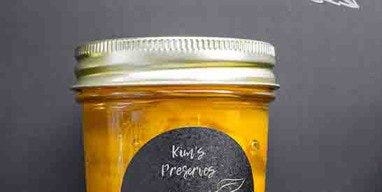Bottle Rockets and Other Educational Crafts
Article By : Jonathan @ BottleStore
It's common for children to make arts and crafts as a way of learning about the world. In science class, kids might make their own colorful tornado from two soda bottles. A high school chemistry lab can use homemade rock candy to teach about evaporation and supersaturation. What many fail to realize is that this fun method of exploration doesn't have to end on graduation day. There are plenty of educational crafts that can be enjoyed by all ages, and most of them require nothing more than basic household ingredients.
Bottle Rockets
One of the most popular educational crafts in both the home and the classroom is the bottle rocket. A bottle rocket is, as the name suggests, a rocket that uses an empty soda or water bottle as the main body and fuel storage. The bottle is filled halfway with water, outfitted with a valve, such as one from a bicycle tire, and pumped full of air. When the air pressure becomes too much for the bottle walls to bear, the cork or stopper will pop off and the bottle will shoot into the sky, propelled by the force of the water being ejected from the bottle. Some versions of a bottle rocket have directional fins and parachutes added to help with the rocket's flight and recovery.
- What Is a Bottle Rocket?
- Make a Soda-Bottle Rocket-Launcher (PDF)
- Bottle Rocket-Launcher Project (PDF)
- Bottle Rocket Activity (PDF)
Bath Bombs
Bath bombs became popular in 1989 as the next evolution of bath salts and powders. These bath accoutrements, typically shaped like a ball, use a combination of citric acid and baking soda to produce carbon dioxide, which is released into water through a fizzing reaction. The different amounts of citric acid and baking soda can create different degrees of reactions, and extra ingredients, like essential oils and glitter, can be added to personalize the bath bomb. Bath bombs can be easily made at home and are a great way to demonstrate a simple and safe chemical reaction.
- Sudsy Science: Creating Homemade Bath Bombs
- How to Make Bath Bombs
- Incredible Chemical Spectacles: Fizzy Bath Bombs
- Bath Bombs: Chemistry (PDF)
- Craft Fizzing Bath Soaps
Terrariums
The natural world is a fascinating thing to observe, but not everyone has access to a forest or swamp in their backyard. A terrarium is not only an artistic way to bring the outdoors in but also the perfect setting to learn more about natural processes like photosynthesis, the water cycle, and natural filtration. A basic terrarium can be constructed with an enclosed glass container, pebbles, charcoal, potting soil, and moss. Additional plants, and even insects, can be added to help make the terrarium a unique natural environment.
- Terrarium Making and the Water Cycle (PDF)
- Terrarium Habitats
- The Art of Terrariums (PDF)
- Building Your Own Biosphere (PDF)
- Build a Terrarium in Six Steps
Telescopes
Mankind has always looked toward the stars for answers, guidance, and inspiration. Today, scientists know more about the realm beyond our solar system than ever before, but it's not necessary to visit an observatory to see these wonders firsthand. One of the first devices to search the skies was nothing more than a pinhole projector, used to safely observe sunspots on the face of the sun. With a few lenses and a cardboard tube, backyard astronomers can observe the night sky just as Galileo did in 1609. Young children can explore fantasy worlds with customizable cardboard toy telescopes and in the evening can gaze up at the stars with a fully-functioning PVC telescope.
- Making a Galilean Telescope
- Make Your Own Hand-Held Hubble
- Building a Telescope
- Cardboard Telescopes for Kids
- Make a Refractor Telescope
- Observe the Sun With a Pinhole Viewer (PDF)
Robots
In an increasingly technological world, many scientists say that the future of humanity rests on the backs of robots. Robotics is a wildly expanding field with uses in health care, space exploration, research, and construction. While nanorobotics is a bit too advanced for home projects, there are a variety of other robots that can be made with objects like rubber bands and toy motors. Racing and battle robots have been a staple of home inventors for years, but thanks to the stigma of complexity, it can be daunting for beginners to attempt a first robotics project. Racing robots, built from an electric toothbrush, are a safe and easy way to become accustomed to the world of robots. Other home inventors may wish to take advantage of repurposed phone parts or toy controls to create a robot that can be directed and controlled by a user. Regardless of the materials used, building a rudimentary robot is a great way to explore the fun of mechanics and computing from the comfort of home.
- Racing Robots (PDF)
- Build Your Own Robot Arm (PDF)
- Jitterbug Robot
- Make a Balloon-Powered Nanorover
- Build a Working Robot









